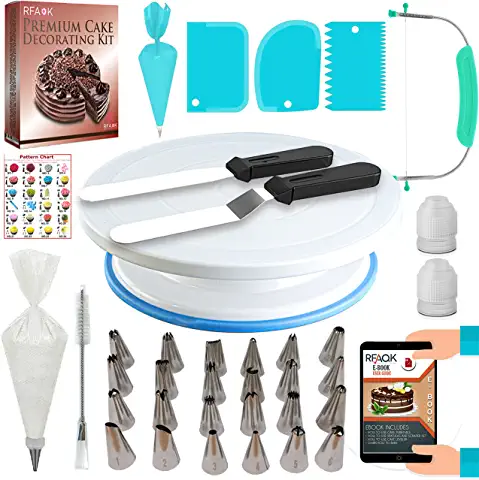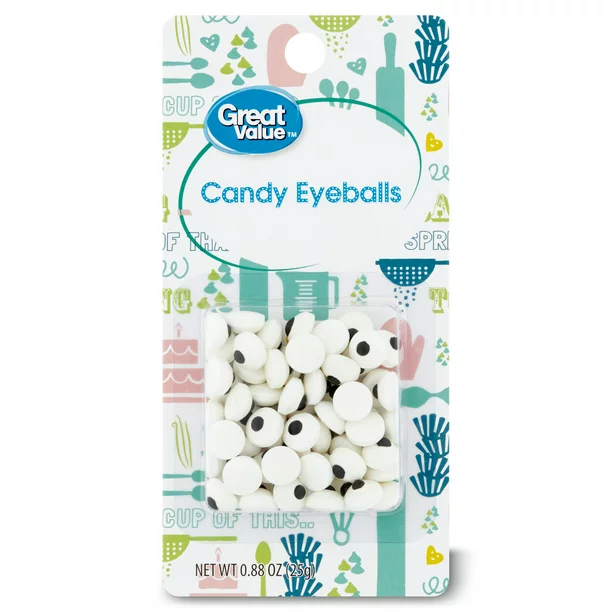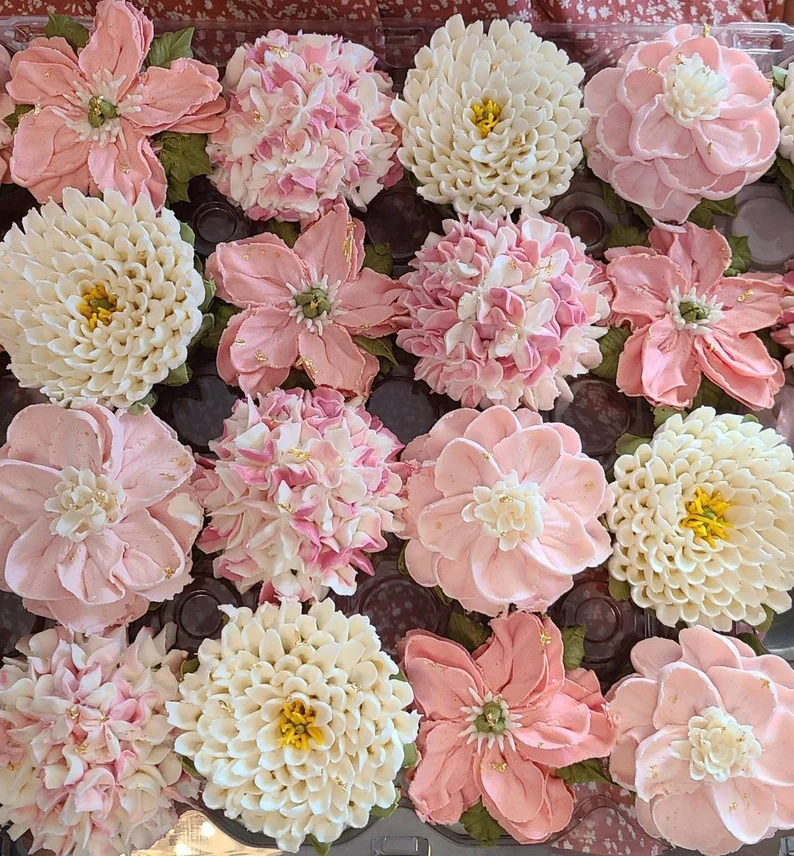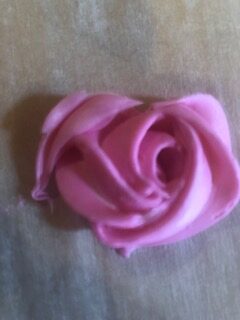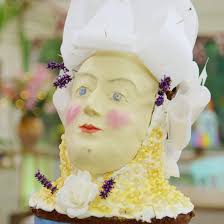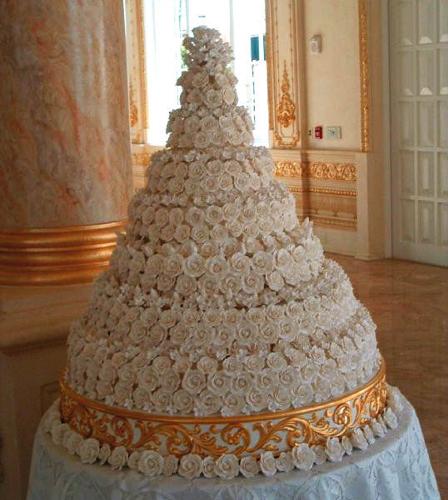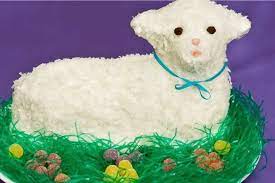Cake decorating seemed like an easy choice in my quest to sample a new skill each day. My goal was not anything as elaborate as a wedding cake, rather a simple cake that didn’t feature my signature sloping, delaminated layers and disjointed frosting that looked more like road rash than a sleek and smooth layer.
As I scrolled through candidate You Tube videos, I decided the vast expanse of a cake top was too intimidating. Cupcakes seemed a wiser choice. If one cupcake crapped out, I could reup with the next one. I impulsively ordered a 64-piece decorating kit from Amazon. (The great joy of a new project is dropping money on the appropriate tools.)
My second executive decision was to buy a tub of frosting instead of making my own. The vast array of premade frostings in baking aisle suggested mine was the popular choice, even though the videos advised that frosting should include the mystery ingredient “meringue powder” to make something called “Royal Icing.” Amazon sells meringue powder but I had already placed my order for the toolkit and was hesitant to increase my carbon delivery footprint with a second order. The buttercream frosting was shelved next to other decorating items in the baking aisle, including a small, disconcerting bag of “candy eyeballs.” I thought what the hell, maybe I will make a kitty cat cupcake. I threw the eyeballs into my cart.
I chose the YouTube video ”Wedding Cupcakes Aren’t Hard to Decorate. I’ll Show You How,” by ZiBakerIz.
My mentor-of-the-day didn’t say the process was easy, rather that it wasn’t hard, which I interpreted as managing expectations. No problem, my expectations were already modest, hoping for something that didn’t look like a hack job, perhaps a collection of demur roses. A multi-petalled zinnia was a stretch goal. As instructed, I loaded the pasty bags with the frankly disgusting frosting. (Sugar, palm oil and fructose corn syrup were the primary ingredients.) A few drops of red food coloring turned my buttercream to a flowery hue.
The video suggested that I practice my skill on a piece of parchment paper, which I miraculously found nestled in the back of my pantry. The general gist was straightforward. Different tips produce different effects. The piping requires a deft touch for each petal, a small squirt with the nozzle down and then a quick lift of the bag, quickly moving on to the next petal as you rotate the cupcake in your hand. The tips all have different numbers, for example, tip 102 is recommended for zinnias but my kit did not identify the tips by number. ZiBakerIz zipped through a whole series of flowers – zinnias, hibiscus, roses – with practiced ease. My efforts fell far short of my humble expectations, but I blame my frosting. It refused to hold its shape and I couldn’t snap off the frosting to move from one petal to the next. I managed to get lucky with one rose.
I could have experimented with Royal Icing or different piping tips, but I got waylaid with flu-like symptoms related to a COVID booster shot. I cocooned on the TV room couch. My general strategy for outlasting minor illnesses is to find a nonviolent, entertaining TV show requiring only a smidge of concentration. I highly recommend The Great British Bake-Off to fill this important niche. Ten bakers, all with predictably crooked teeth, are asked to make bizarre cookies, cakes, custards or other novelty items. Each week one of the bakers get booted. Contestants are routinely asked to include visual illusions that go well beyond a prosaic piped flower. One contestant got high marks for a cookie that looked like a hamburger, complete with cheese oozing out the bun, another made a cookie that looked like a yo-yo. Each episode has a showstopper segment requiring, for example, a multicomponent tea party scene, or a bust, which produced a serviceable Marie Antoinette with cotton candy hair.
As a roused myself from the couch, I thought about the role of visual illusion in food and promptly (and gratefully) fell into the rabbit hole of “neurogastronomy.” The terminology gets tricky as “taste” refers only to the input from tastebuds (sweet, sour, salty, bitter, umami) as opposed to the broader concept of “flavor,” referring to the multi-sensory food experience, most predominantly the interplay between taste and smell. Eighty percent of what we perceive as flavor comes from olfactory input, which can be subdivided as coming from outside the body (orthonasal, e.g., home cooking), transitioning to the smell coming from within the mouth as the food is chewed (retronasal, e.g. mouth odor). Multisensory flavor is a quintessentially human experience, rivaled only by sex.
Charles Spence, well represented on YouTube videos, is most famous for his research on the impact of sound on flavor perception. His experiment on potato chips demonstrated that subjects eating identical Pringle chips rated their freshness differently based on the sound of their crunch. Some chefs have taken these multisensory concepts to a gimmicky extreme, providing seafood diners with headphones piping in the sound of lapping waves and squawking seagulls.
Spence emphasizes that laboratory research cannot measure the critical impact of atmosphere, mood and expectation on the dining experience. All three factors run high at a wedding reception when the cake is ushered into the hushed dining room. The guests, well liquored up, gasp at the artistry and engineering involved in creating a multi-tiered wedding cake with a cascading garland of confectionary flowers. My little experiment in cake decorating on a piece of parchment paper was wholly devoid of atmosphere and suffused with dashed expectations. I was disappointed in my artistic skills and frustrated by flaccid frosting that refused to hold its shape.
A wedding cake, stored in a refrigerator, has no odor wafting through the room. Therefore, smell, over one half of our flavor perception, has no role. Sound may have some background input with clinking of glasses, background buzz of conversation and laughter. I posit that the visual must be the predominant sensory foreplay of the cake reveal. However, at some point I also contend that the visual loses its tether to the flavor. This gulf widens as the cake becomes more theatrical, reaching its maximum in the wedding cake for Melania and the former, twice-impeached president. The 200-pound object with 3,000 icing roses was not edible due to the wiring required to defy gravity. It was a stunt cake.
Where is the synergistic balance between visual artistry and the flavor experience?
The judges on the Great British Bake-Off do not consider this aspect of neurogastronomy. The creations are judged separately on presentation and then flavor, and not how the visual (or the attendant tense atmosphere of an elimination challenge) might enhance or detract from the flavor. In one episode, the contestants were challenged to create a cake that looked like their home. One baker duplicated his apartment building. The judges praised the illusion and gave a nod to his piping and coloring skills. The baker described tender moments together with his beloved nan, peering out the second-floor window. This homey atmosphere was short-lived. With one slice of the knife, the home fell into rubble, as if it had succumbed to a terrorist attack.
In his many YouTube videos, Charles Spence does not comment on the impact of the visual after that first fateful slice. I also wonder about cookies with the faithful visual illusion of a favorite cartoon character. How does a child feel about biting the head off of Bert or Ernie? One Easter my grandmother served an anatomically correct baby lamb cake, sitting on a bed of green piped grass, its coat carefully textured to look like fluffy wool. The lamb had a bow around its neck, suggesting this was a pet, not a random barnyard animal headed to the butcher. Its candy eyeballs and pursed pink lips created an atmosphere of curiosity and hope.
Relatives around the table collectively admired the artistry. My grandmother then gave me the dubious honor of making the first cut. I was conflicted. Should I start boldly and just decapitate the creature or move rearward for a disemboweling slice. Maybe I could disguise the death scene by making a horizontal slice along the back so that the lamb still looked intact from the front. Other family members had the same reaction and the uneaten lamb ended up in our freezer. There it remained, still cheerfully sitting on its bed of grass, its beseeching eyeballs meeting my gaze as I reached for the neighboring carton of ice cream.
Follow Liza Blue on:Share:

